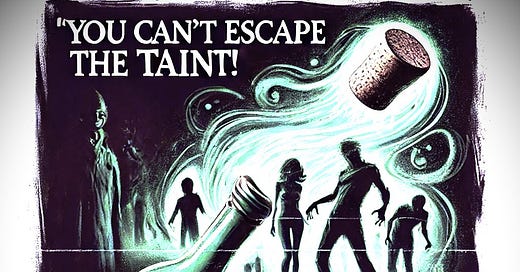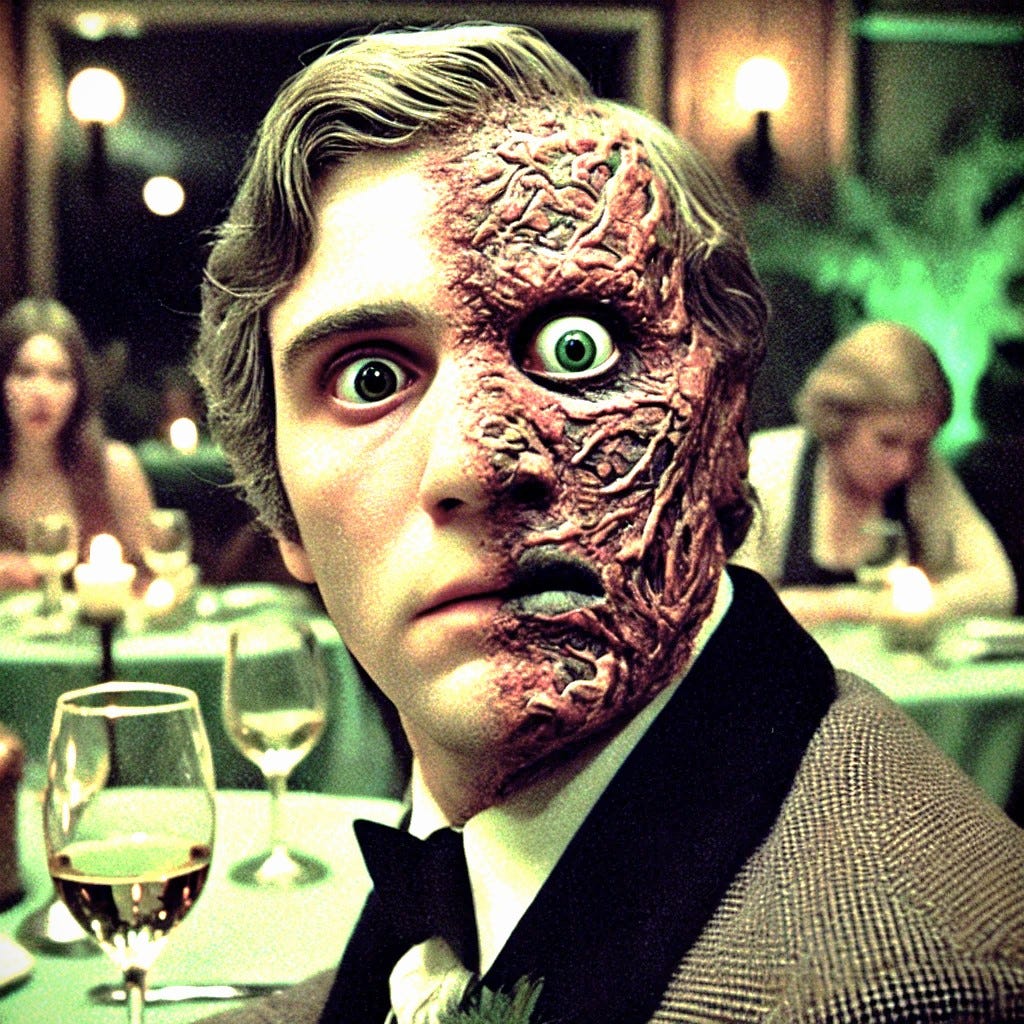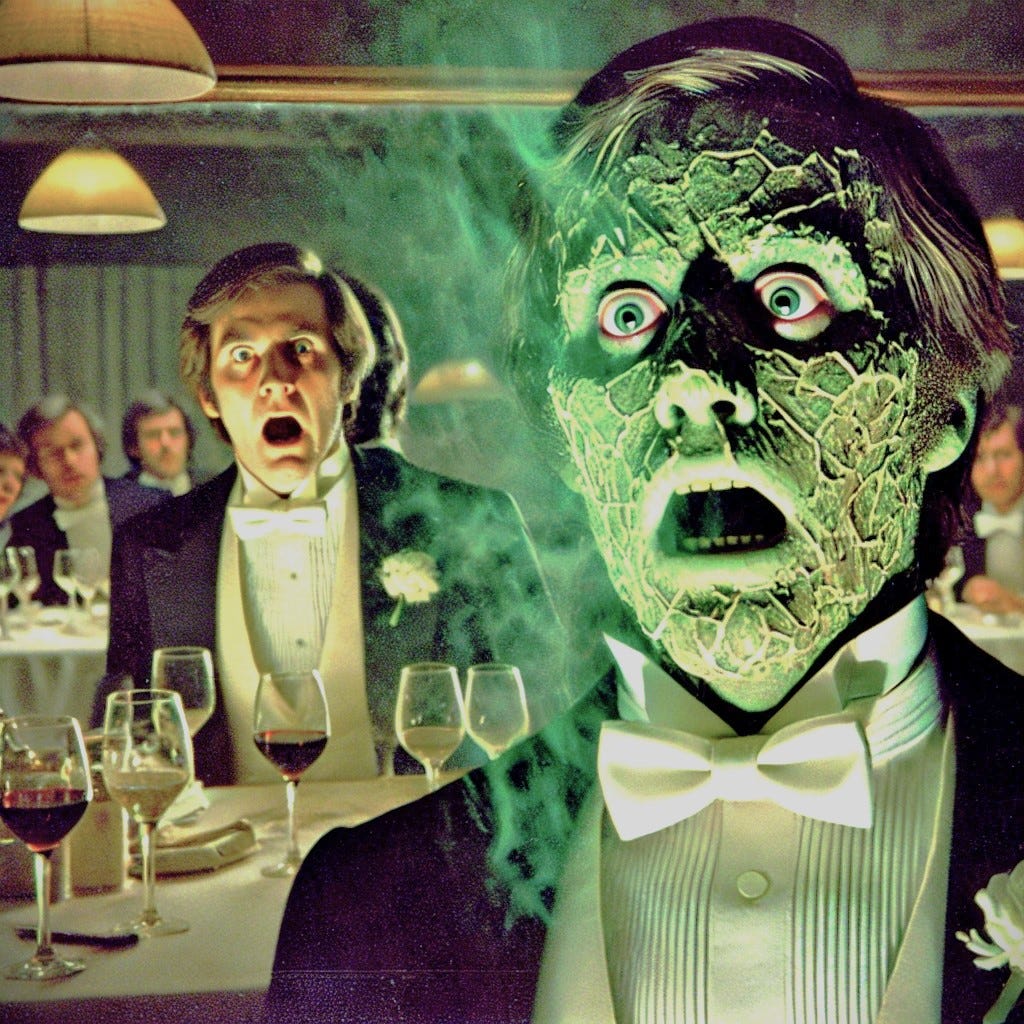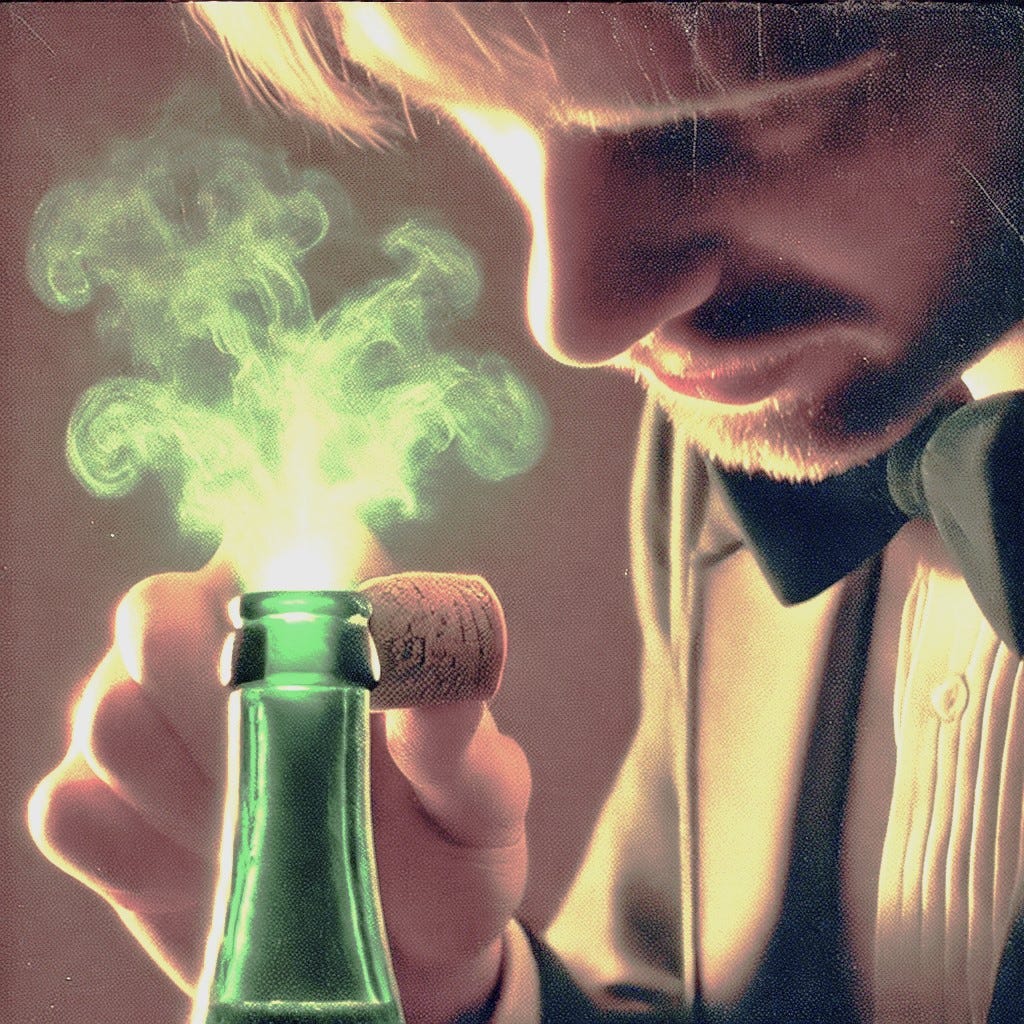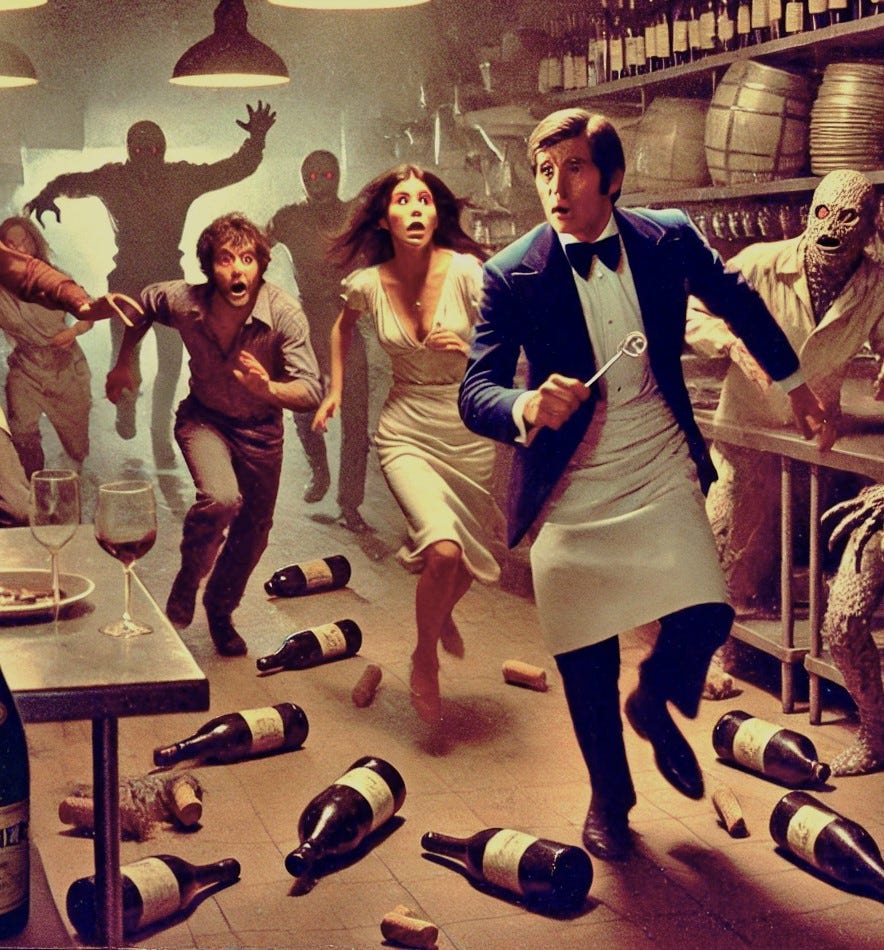In the golden age of the 1970’s B-movie horror, with classics of the day such as “Knock, Knock, Joker,” “Night of the Living Curtains” and who could forget “Rise of the Cabbage Man,” few films dared to tackle the terrifying mystery of wine contamination quite like the T.C.A. – The Corking Infection.
Bear in mind that back in the 1970’s, we know that 83% of all bottles of wine were contaminated with T.C.A and also remember that 74% of statistics were fabricated by liars. There is no doubt that it was a threat to our way of life.
The legendary zombie movie was originally released to little fanfare, but we do declare that this hocum-pocum has since aged like a fine (well, corked) wine and is now beloved by horror aficionados and wine enthusiasts alike.
The film’s shocking premise where a rare strain of T.C.A. spreads through an upscale restaurant, corking diners into bacteria infected monsters was a satire of the restaurant industry in the 1970’s.
We would all agree - this is all the more relevant nowadays.
The film stars B-movie superstar Jacob Rigamoral as the super-determined yet super-overwhelmed star sommelier and Fleming Kerlipclop as the menacing, corked superstar head waiter. None would disagree that T.C.A. delivers superstar performances that elevate the star movie from a super Blob-like scream-fest to a superstar classic.
But what ss T.C.A. anyway?
T.C.A, or 2,4,6-trichloroanisole, may sound like science fiction, but it is actually “science-faction” and a real-life villain in the world of wine.
It is a chemical compound notorious for its ability to taint wines, giving them a musty, damp cardboard aroma - a phenomenon known as “Cork Taint.”
This led to the popular belief that if a wine is faulty, it must be “corked” but actually there are many things that it could be.
There’s Volatile acid that gives a vinegar twist or Brettanomyces bringing a barnyard mist. Oxidation, where your once-vibrant wine turns apple-juice dull and that is not fine. Heat damage steps in, with a cooked sensation, for a wine that wants to offer a jam impersonation.
There’s Reduction, where wine smells like a struck match or worse, rotten eggs from a rotten egg batch. Or maybe it’s blessed with a Secondary Ferment, fizzing Tannat is not what you want?
You could face the Mouse Taint of feral wet fur or perhaps Light-Struck wine with boiled cabbage blur. Then, Maderization where caramel notes change, your crisp Chardonnay into something quite strange.
Historically, T.C.A. contamination originates from natural cork stoppers that have been exposed to certain chlorophenols - commonly found in cleaning products, pesticides and even the wood used to store wine.
When these compounds come into contact with mold, they produce T.C.A, which can then infect wine and wreak havoc on the senses.
However, corks aren’t the only thing susceptible to T.C.A. contamination. Anything that has been in contact with these fungi and chlorinated compounds can theoretically become "corked," including barrels, wooden pallets and even paper labels. In some cases, even the air in a winery can become contaminated if T.C.A. is present in the wood or other materials used. This leads to an important question: what else can be "corked"?
Can we be corked?
Detecting T.C.A. in wine requires a well-tuned nose and mind - often described as a musty, wet-dog-like smell - experienced sommeliers and winemakers have battled this invisible enemy for years.
Solution have been implemented over the years such as synthetic corks, screw caps and stricter quality control in cork production, like a professional cork-sniffer.
But as the film explores, once the infection starts, it’s impossible to stop…
The Corking Infection begins innocently enough, with a prestigious restaurant serving a high-society crowd. But after Sommelier, Jacob Rigamoral uncorks a seemingly perfect bottle of Bordeaux, the true horror begins to seep out - literally. The TCA strain spreads like a virus, not just spoiling the wine but infecting the diners, transforming them one by one into grotesque corked versions of themselves.
Early symptoms of infection are subtle - guests begin to lose their sense of taste and smell, wine starts to taste like moldy cardboard and some report “dry mouth” that feels spongy. Soon, the full effects of T.C.A. contamination take hold, with diners’ skin turning spongy and cork-like, their faces cracking like aged wine corks and their movements becoming slow and robotic.
The film’s standout scenes, including Fleming Kerlipclop as the restaurant’s head waiter delivering the chilling line, “Oh no, I’ve been corked!”, serves as a warning of the real-life devastation cork taint can cause for winemakers.
Just when it seems like our Sommelier hero has the infection contained, the film delivers its final punch: a chilling twist that leaves the audience questioning everything.
After narrowly escaping the restaurant with a few uninfected guests, the sommelier believes he has triumphed over the corked menace.
As the survivors uncork a fresh bottle to celebrate their survival, the unmistakable musty smell of TCA fills the air once more. The camera zooms in on the bottle’s label - “Synthetic Cork” - revealing the true horror…
TCA wasn’t just in the natural corks. It had spread beyond, infecting even synthetic closures, leaving no bottle safe.
The infection wasn’t contained at the restaurant; it’s spreading globally, and the survivors, once hopeful, are left staring at their tainted wine in silent, corked horror as the credits roll.
The Corking Infection has grown from obscure midnight movie to revered cult classic. Its themes of contamination and loss of control speak to universal fears. Today, it’s beloved for its nostalgic cheesiness and has even inspired wine bars to host special “Corked” screenings, complete with tainted wine tastings and interactive audience participation.
“Oh no, I’ve been corked!”

